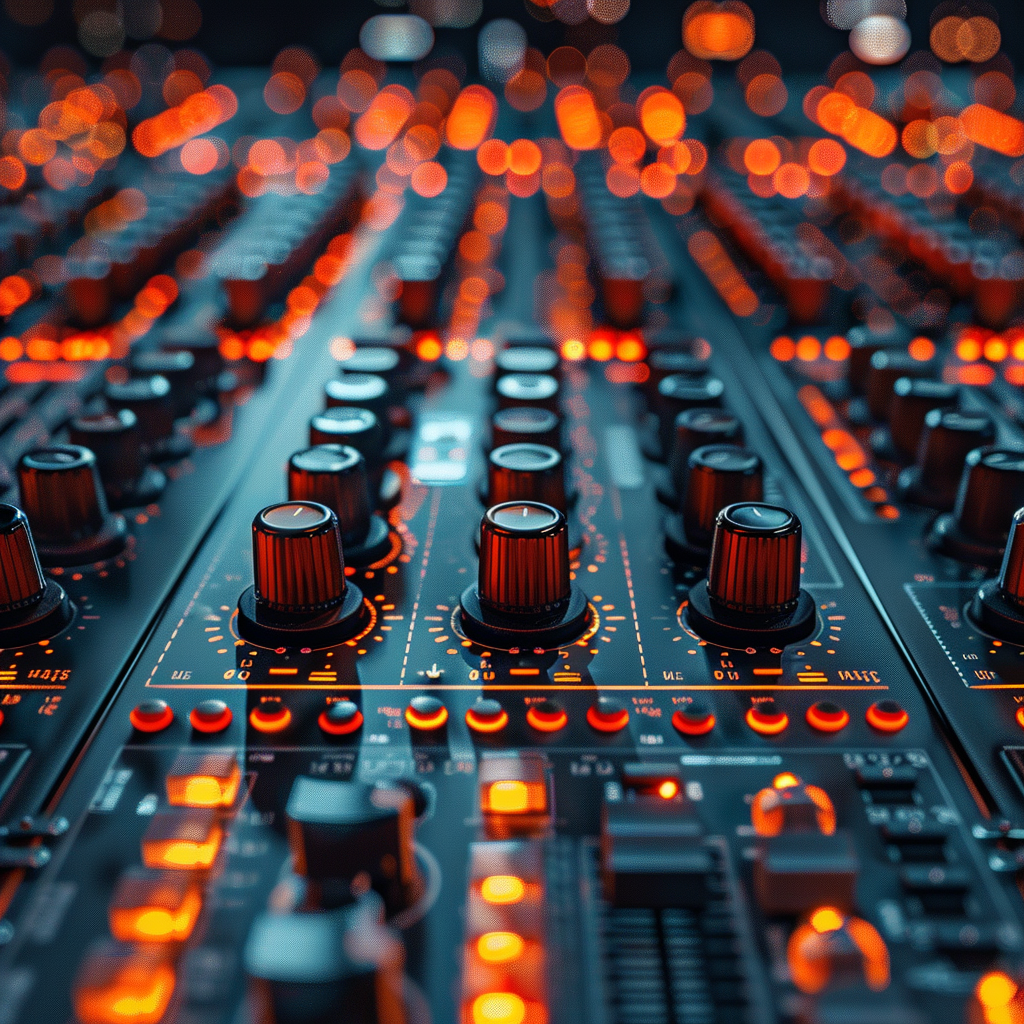Introduction
Gain staging is a fundamental concept in audio production that plays a crucial role in maintaining the integrity and quality of your recordings and mixes. Understanding and properly implementing gain staging can significantly impact the clarity, dynamics, and overall sound of your audio projects. This article will delve into what gain staging is, why it’s important, and common pitfalls to avoid.
What is Gain Staging?
Gain staging refers to the process of managing the levels of audio signals at various stages of the signal path to ensure optimal performance and minimal distortion. It involves setting the appropriate levels for each piece of equipment or plugin in the audio chain, from microphones and preamps to digital audio workstations (DAWs) and outboard gear. Proper gain staging helps maintain a healthy signal-to-noise ratio and prevents clipping and unwanted noise.
Key Stages in the Signal Path:
- Input Stage: The initial capture of the audio signal, typically involving microphones, instruments, and preamps.
- Recording Stage: The signal is recorded into a DAW or recording device.
- Processing Stage: The use of plugins and outboard gear for EQ, compression, reverb, etc.
- Output Stage: The final mix or master that is played back or exported.
Why is Gain Staging Important?
- Preventing Clipping and Distortion:
- Clipping: Occurs when the audio signal exceeds the maximum level that a system can handle, resulting in a harsh, unpleasant distortion.
- Proper gain staging ensures that the signal remains within an acceptable range, avoiding clipping and maintaining audio fidelity.
- Maintaining a Good Signal-to-Noise Ratio:
- Signal-to-Noise Ratio (SNR): The ratio of the desired audio signal to the background noise level.
- Optimizing gain levels helps maximize the SNR, reducing the prominence of noise and hiss in recordings.
- Ensuring Consistent Levels:
- Consistent gain staging across different stages of the signal path ensures that the audio levels are manageable and predictable, facilitating easier mixing and processing.
- Optimal Plugin and Gear Performance:
- Many plugins and outboard processors are designed to operate best at certain input levels. Proper gain staging ensures that these tools work within their optimal range, providing better sound quality and more accurate processing.
Common Things to Look Out For in Gain Staging
- Starting with a Clean Signal:
- Ensure that the initial recording or input signal is free from noise and distortion. Use quality microphones, instruments, and preamps to capture a clean signal.
- Monitoring Levels:
- Use meters on your DAW, audio interface, and plugins to monitor signal levels. Aim for levels that are strong enough to be above the noise floor but not so high that they risk clipping.
- Gain Structure:
- Adjust the gain at each stage of the signal path to maintain optimal levels. Avoid excessive boosting or cutting at any single stage, as this can introduce noise or distortion.
- Headroom:
- Leave sufficient headroom (space below the clipping point) at each stage. This allows for dynamic peaks in the audio without causing clipping.
- Unity Gain:
- When passing the signal from one device or plugin to another, aim for unity gain, meaning the output level of one stage is equal to the input level of the next. This ensures consistent levels throughout the signal path.
- Calibration:
- Calibrate your monitoring system and audio interface to ensure accurate level representation. This helps in making informed decisions about gain adjustments.
Practical Steps for Effective Gain Staging
- Set Initial Levels:
- Start by setting the input gain on your audio interface or preamp. Aim for a level that peaks around -18 dBFS (decibels relative to full scale) in your DAW. This provides a good balance between a strong signal and sufficient headroom.
- Check Plugin Input Levels:
- When inserting plugins, ensure that the input levels are appropriate. Most plugins are designed to work optimally with signals around -18 dBFS. Adjust the input gain of the plugin if necessary.
- Maintain Consistency:
- As you add more plugins and process the audio, ensure that the output level of each plugin is roughly equal to its input level. This maintains consistent levels throughout the signal chain.
- Final Output Level:
- When preparing the final mix, ensure that the master output level is within an acceptable range, usually peaking around -6 dBFS. This leaves headroom for mastering and prevents clipping.
Common Pitfalls in Gain Staging
- Ignoring Input Levels:
- Failing to set proper input levels can result in recordings that are either too quiet (high noise floor) or too loud (clipping).
- Overprocessing:
- Excessive boosting or cutting of gain in multiple stages can degrade the signal quality. Aim for subtle adjustments.
- Neglecting Metering:
- Relying solely on your ears without checking levels visually can lead to inaccurate gain staging. Use metering tools to guide your adjustments.
- Inconsistent Gain Structure:
- Inconsistencies in gain structure across different stages can lead to unpredictable levels and processing issues. Ensure a smooth and consistent gain flow.
Summary
Gain staging is a critical aspect of audio production that ensures the clarity, dynamics, and overall quality of your recordings and mixes. By understanding and implementing proper gain staging techniques, you can prevent clipping and distortion, maintain a good signal-to-noise ratio, and ensure that your plugins and gear perform optimally. Pay attention to each stage of the signal path, monitor levels consistently, and make informed adjustments to achieve professional-sounding audio.

